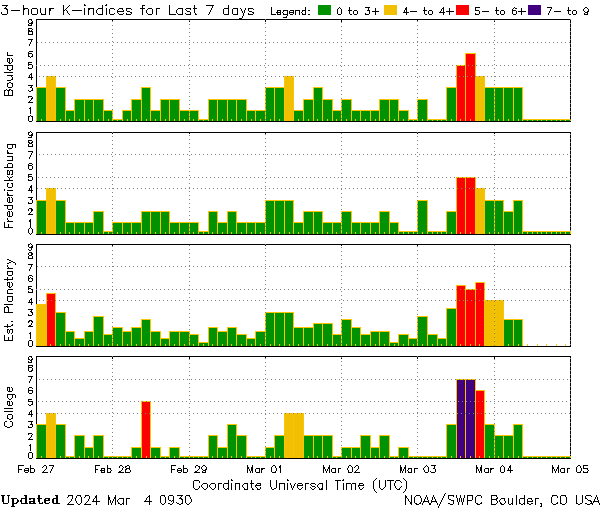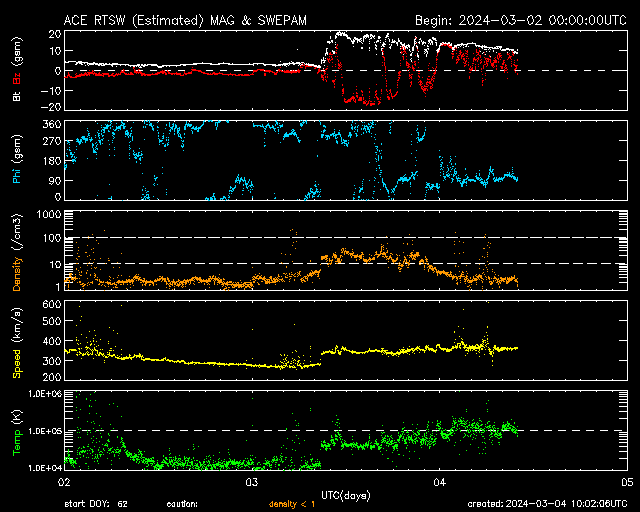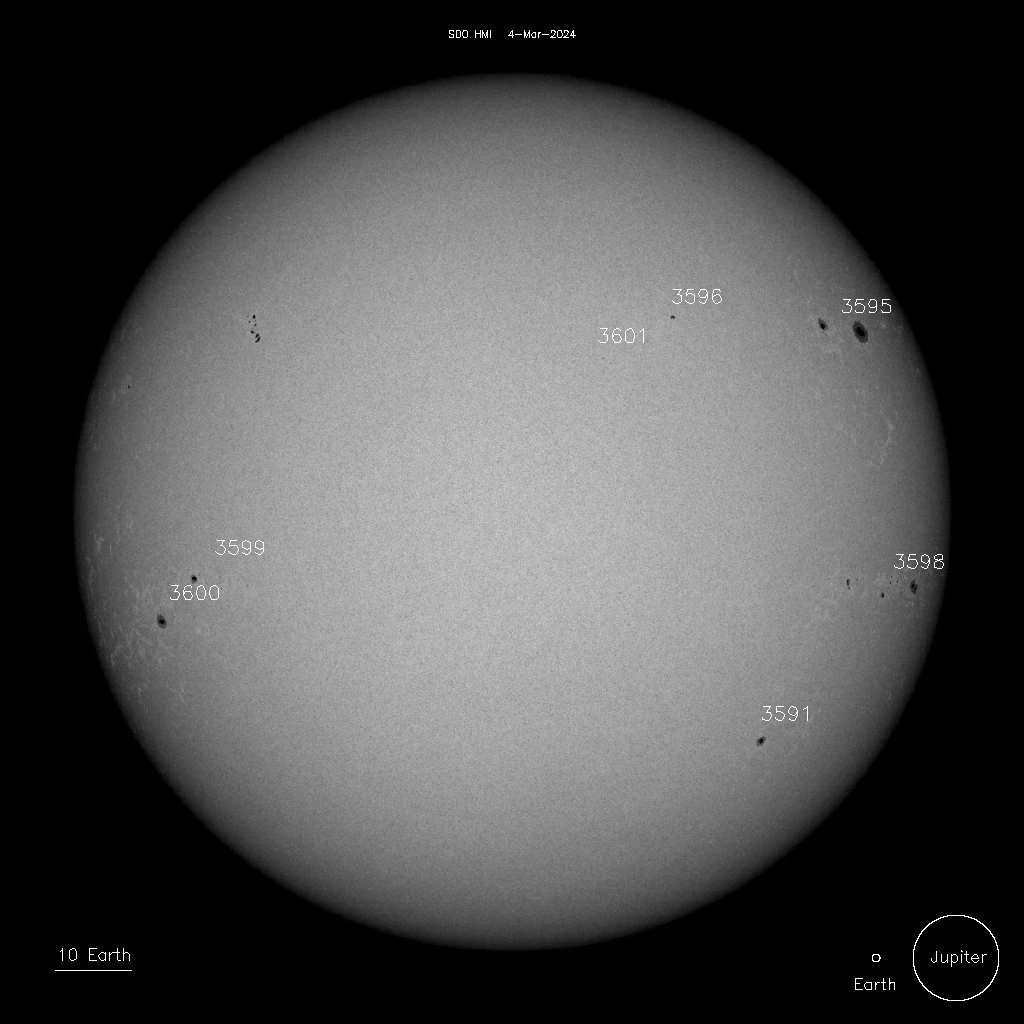A coronal mass ejection (CME) produced by C5.1 solar flare on February 28, 2024, impacted Earth at approximately 08:45 UTC on March 3, producing G2 – Moderate geomagnetic storming.
Following the CMEs arrival, total field strength reached 19 nT, Bz reached -17 nT and solar wind speeds increased from 280 to 375 km/s.
The geomagnetic field was at quiet to unsettled levels through midday UTC on March 3 and then increased in activity to minor storm (G1 – Minor) and major storm (G2 – Moderate) over the next couple of hours.
CME impacts are now subsiding and only isolated active periods are expected on March 4. March 5 and 6 are expected to see quiet geomagnetic field conditions.



Solar activity was at low levels in 24 hours to 00:30 UTC on March 3, with low-level C-class flares observed from Regions 3589 (beta) and 3599 (beta).
There are currently 7 numbered active regions on the Earth side of the Sun today. While regions 3589 and 3599 showed signs of decay over the past 36 hours, the remaining regions were mostly stable.
There were no Earth-directed CMEs detected over the past 24 hours.


References:
1 Forecast Discussion – Issued: 2024 Mar 04 0030 UTC – Prepared by the U.S. Dept. of Commerce, NOAA, Space Weather Prediction Center
Featured image: Aurora forecast at 16:45 UTC on March 3, 2024. Credit: NOAA/SWPC
Three CMEs heading toward Earth, impact expected on February 13
Monday, February 12, 2024
Multiple CMEs impact Earth, sparking G3 – Strong geomagnetic storm
Saturday, December 2, 2023
Global SAR arc outbreak: Geomagnetic storm leads to rare SAR arc sightings across the globe
Wednesday, November 8, 2023
Geomagnetic storm reaches G3 – Strong level after dual CME impact
Monday, November 6, 2023
Rare red auroras seen as far south as France
Tuesday, September 26, 2023
CME impacts Earth, producing G3 – Strong geomagnetic storming
Saturday, August 5, 2023
CIR/CH HSS impact produces G2 – Moderate geomagnetic storming
Friday, June 16, 2023